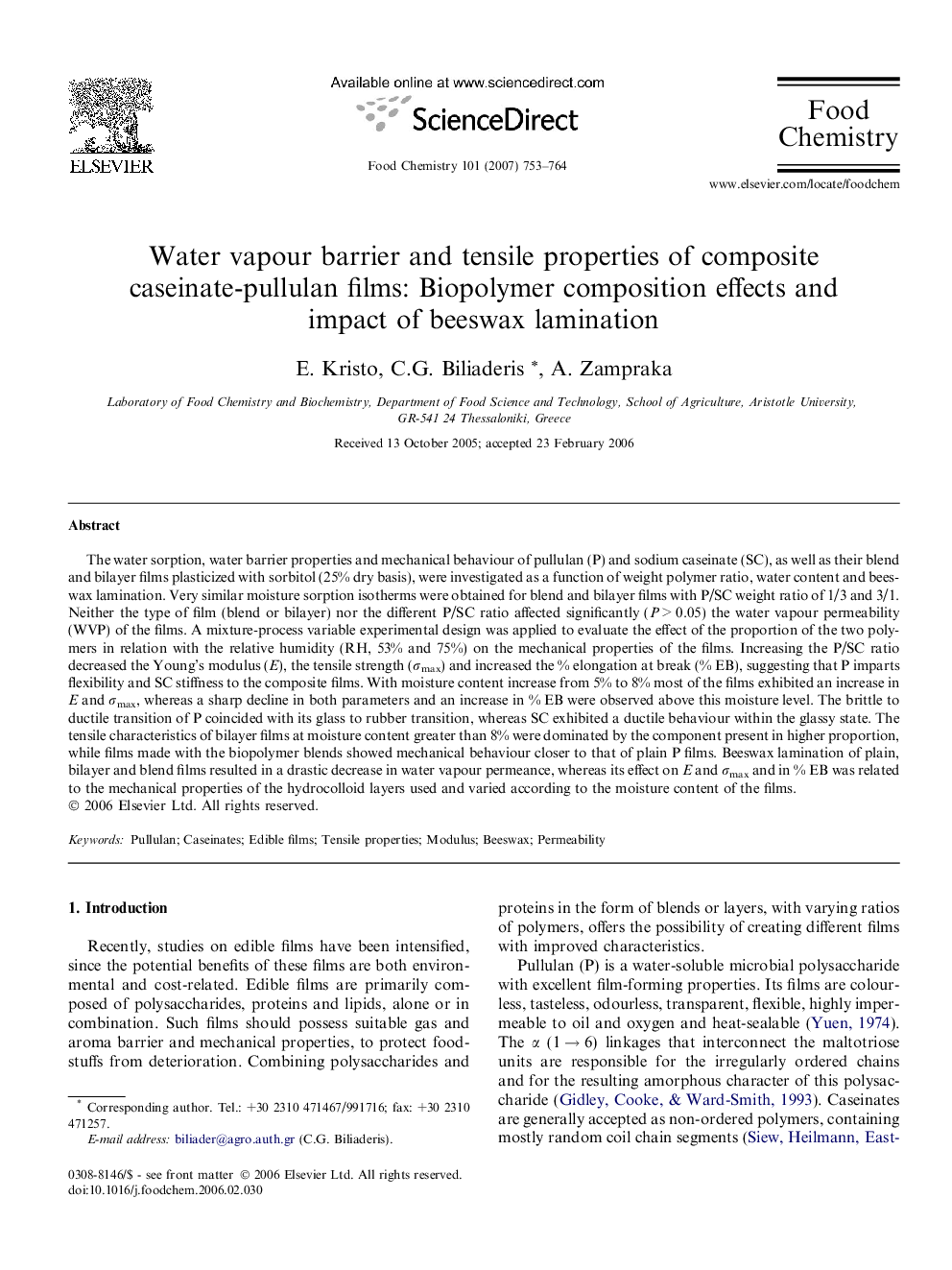| Article ID | Journal | Published Year | Pages | File Type |
|---|---|---|---|---|
| 1191910 | Food Chemistry | 2007 | 12 Pages |
The water sorption, water barrier properties and mechanical behaviour of pullulan (P) and sodium caseinate (SC), as well as their blend and bilayer films plasticized with sorbitol (25% dry basis), were investigated as a function of weight polymer ratio, water content and beeswax lamination. Very similar moisture sorption isotherms were obtained for blend and bilayer films with P/SC weight ratio of 1/3 and 3/1. Neither the type of film (blend or bilayer) nor the different P/SC ratio affected significantly (P > 0.05) the water vapour permeability (WVP) of the films. A mixture-process variable experimental design was applied to evaluate the effect of the proportion of the two polymers in relation with the relative humidity (RH, 53% and 75%) on the mechanical properties of the films. Increasing the P/SC ratio decreased the Young’s modulus (E), the tensile strength (σmax) and increased the % elongation at break (% EB), suggesting that P imparts flexibility and SC stiffness to the composite films. With moisture content increase from 5% to 8% most of the films exhibited an increase in E and σmax, whereas a sharp decline in both parameters and an increase in % EB were observed above this moisture level. The brittle to ductile transition of P coincided with its glass to rubber transition, whereas SC exhibited a ductile behaviour within the glassy state. The tensile characteristics of bilayer films at moisture content greater than 8% were dominated by the component present in higher proportion, while films made with the biopolymer blends showed mechanical behaviour closer to that of plain P films. Beeswax lamination of plain, bilayer and blend films resulted in a drastic decrease in water vapour permeance, whereas its effect on E and σmax and in % EB was related to the mechanical properties of the hydrocolloid layers used and varied according to the moisture content of the films.
